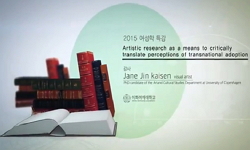While the purpose of the Doctrine of the Mean (Zhongyong) extends far beyond the moral realm and embraces political issues and metaphysical purposes, the present essay focuses on the ethical side of the treatise. It suggests the possibility of a compa...
http://chineseinput.net/에서 pinyin(병음)방식으로 중국어를 변환할 수 있습니다.
변환된 중국어를 복사하여 사용하시면 됩니다.
- 中文 을 입력하시려면 zhongwen을 입력하시고 space를누르시면됩니다.
- 北京 을 입력하시려면 beijing을 입력하시고 space를 누르시면 됩니다.
https://www.riss.kr/link?id=A100281293
- 저자
- 발행기관
- 학술지명
- 권호사항
-
발행연도
2014
-
작성언어
English
- 주제어
-
등재정보
KCI등재
-
자료형태
학술저널
- 발행기관 URL
-
수록면
113-152(40쪽)
- 제공처
-
0
상세조회 -
0
다운로드
부가정보
다국어 초록 (Multilingual Abstract)
While the purpose of the Doctrine of the Mean (Zhongyong) extends far beyond the moral realm and embraces political issues and metaphysical purposes, the present essay focuses on the ethical side of the treatise. It suggests the possibility of a comparison between several issues of the Zhongyong and Western considerations about shaping the moral self, especially within the Stoic tradition in ancient Rome. Although different in purpose and grounded in quite alien worldviews, both traditions can meet through dialogue as they share somewhat similar beliefs about virtue, the essence of wisdom and the moral training of individuals toward virtue. Recent comparative studies have already drawn bridges between Stoicism on the one side, and Daoism or Buddhism on the other side, yet Stoicism and Confucianism have scarcely been studied together until now. After a short summary of that treatise, this paper shall examine the links to be drawn between ancient (mostly) Stoic philosophy and the Confucian teaching of Zisi in several chapters of the Zhongyong (14-15 and 17-19). The present paper wishes but to suggest ways of addressing issues relevant to both traditions, especially 1/ the fact that virtuous people endure hardships (Zhongyong 14); 2/ that virtue is within everyone’s reach, but not effortlessly (Zhongyong 15); 3/ the link between virtue and success (Zhongyong 17); and 4/ the precedence among virtues (Zhongyong 18-19).
목차 (Table of Contents)
- 1. The Zhongyong in a nutshell
- 2. Hardships and the virtuous (Zhongyong 14)
- 3. Virtue within reach, but not effortlessly (Zhongyong 15)
- 4. Shun and the uneasy connection between virtue and success (Zhongyong 17)
- 5. King Wu, filial piety and precedence amongst virtues (Zhongyong 18-19)
- 1. The Zhongyong in a nutshell
- 2. Hardships and the virtuous (Zhongyong 14)
- 3. Virtue within reach, but not effortlessly (Zhongyong 15)
- 4. Shun and the uneasy connection between virtue and success (Zhongyong 17)
- 5. King Wu, filial piety and precedence amongst virtues (Zhongyong 18-19)
- 6. Further considerations on “weighing” (權) circumstances
- Bibliography
- [Abstract]
동일학술지(권/호) 다른 논문
-
Democracy and Free Speech in Herodotus’ Lydian Logos
- 한국서양고전학회
- Chris Barker
- 2014
- KCI등재
-
Plato, Socratics and the Tyrannical Personality
- 한국서양고전학회
- David Levystone
- 2014
- KCI등재
-
Plato’s Use of Rhetoric for Political Project
- 한국서양고전학회
- Yoon Cheol Lee
- 2014
- KCI등재
-
Fehlhandlung (hamartia) als Ursache des Unglücks in der Tragödientheorie bei Aristoteles
- 한국서양고전학회
- Eun-Ae Kim
- 2014
- KCI등재
분석정보
연관 공개강의(KOCW)
-

Making Meaning
Teachers TV Teachers TV -

The Spiritual and Religious Characteristics of Korean Confucianism
K-MOOC 성균관대학교 K학술확산연구센터 노영찬, 석봉래, 최석, 김정엽, 도널드 베이커 -

Mean, Median and Mode
Teachers TV Teachers TV -

Points Mean Prizes
Teachers TV Teachers TV -

Artistic research as a means to critically translate perceptions of transnational adoption
이화여자대학교 Jane Jin Kaisen





 KCI
KCI DBpia
DBpia

